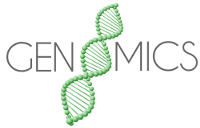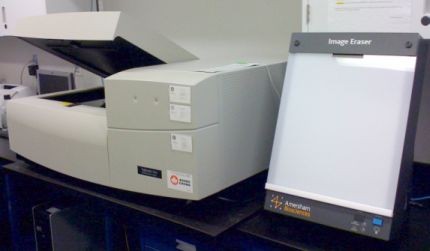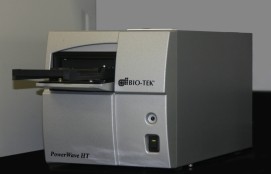The CSFG has numerous options for gradient PCR. The Eppendorf Mastercycler Gradient Thermal Cycler is capable of establishing a temperature gradient across its functional surface (midpoint +/- 1° C to 10° C, or a 2° C to 20° C gradient, with the lowest temperature of a gradient being 4° C and the highest 99° C), allowing a quick determination of the optimal annealing temperature for PCR reactions. It can accomodate 96 x 0.2 ml or 77 x 0.5 ml PCR reaction tubes or one 96-well microtiter plate.
We have several ABI Veriti thermocyclers, whose temperature can range from 4.0ºC to 99.9º C with ±0.25º C accuracy in the 35º C – 99.9º C range and the maximal ramp rate is 3.9º C/sec. The 96 well block is separated into 6 block zones, whose temperature can be controlled independantly. The Veriti can accomodate 96 x 0.2 ml PCR reaction tubes or one 96-well microtiter plate (reaction volume 10-80 ul).
Finally, the Techne Touchgene Gradient Thermal Cycler also establishes a gradient across its temperature block, but has a slightly more linear and larger maximum gradient (midpoint +/- 0.5° C to 15° C, or a 1° C to 30° C gradient, with the gradient range being from 20° C to 70° C and operating temperatures from 4° C to 99° C) than the Eppendorf model. It can accomodate 96 x 0.2 ml microtubes or one 96-well microtiter plate.
Location: GE S110.04, GE 200.00.
















